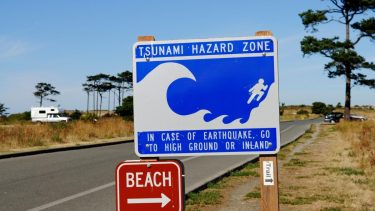
The University of Washington is a lead partner on a new multi-institution earthquake research center based at the University of Oregon that the National Science Foundation announced Sept. 8 will receive $15 million over five years to study the Cascadia subduction zone and bolster earthquake preparedness in the Pacific Northwest and beyond.
The Cascadia Region Earthquake Science Center, or CRESCENT, will be the first center of its kind in the nation focused on earthquakes at subduction zones, where one tectonic plate slides beneath another.
The center will unite scientists studying the possible impacts of a major earthquake along the Cascadia subduction zone, an offshore tectonic plate boundary that stretches more than 600 miles (1,000 kilometers) from southern British Columbia to Northern California. The center will advance earthquake research, foster community partnerships, and diversify and train the next generation geosciences work force.
“The main goal of the center is to bring together the large group of geoscientists working in Cascadia to march together to the beat of a singular drum,” said center director Diego Melgar at the University of Oregon. “The center organizes us, focuses collaboration and identifies key priorities, rather than these institutions competing.”
Harold Tobin, the Paros Chair in Seismology and Geohazards, a professor of Earth and space sciences at the UW and director of the Pacific Northwest Seismic Network, leads the effort at the UW.
“This NSF Center will be a game-changer for earthquake research in the Pacific Northwest; it will have direct, real-world public safety consequences for policy and planning,” Tobin said. “Initial CRESCENT efforts include identifying key faults — both on land and under the sea — that present earthquake and tsunami hazard, measuring and modeling movements of the crust that could show us where earthquake strain is building, and much more.”
Read more at UW News »
